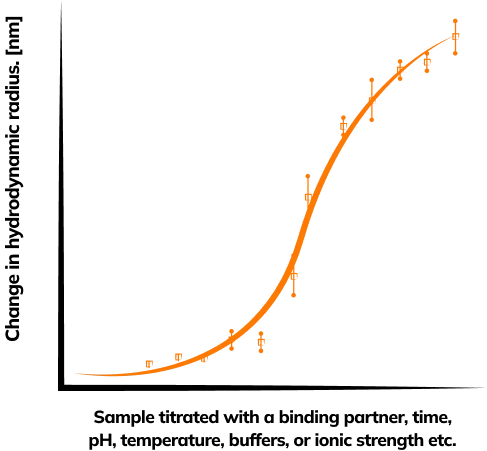FIDA technology embodies first-principles thinking.
It uses first principles of physics and fluid mechanics to analyze the movement of particles in a fluid.
Thanks to its simplicity, it can deliver a wealth of data, with just one assay.


1. Laminar Flow
Laminar flow is a smooth, non-turbulent flow of a fluid pushed through a capillary. In a laminar flow regime, the fluid moves in parallel streams.


2. Taylor Dispersion
Taylor dispersion describes the behaviour of small particles in the flow. As the flow is laminar, the particles will not mix evenly, but instead experience a fluctuating motion. Such a motion results in a dispersion of the particles over time and space, as they diffuse and move along the flow.

FIDA technology takes advantage of these two principles
by measuring fluorescence of particles in the laminar flow and analysing their dispersion over time, which allows for calculation of the hydrodynamic radius of a particle of interest.


Additionally, hydrodynamic radius measurement opens door to another crucial biophysical property: the binding between two or more biomolecules
As biomolecules come together and bind in solution, their diffusivity (D) decreases; that is, the bound molecules will diffuse slower through the capillary and generate a more extended dispersion profile and diffusion coefficient (D). Using the Stokes-Einstein equation, FIDA software reveals the increase in size (Rh) of the molecules as they bind together. Titrating your molecule of interest with its binding partners in a simple FIDA experiment uncovers a wide range of binding parameters, such as affinity (Kd), derived directly from the hydrodynamic radius and the Stokes-Einstein equation.
Would you like to dive into details? Here’s how it works:
How do FIDA users benefit from the first principles?
Accuracy






.webp)
